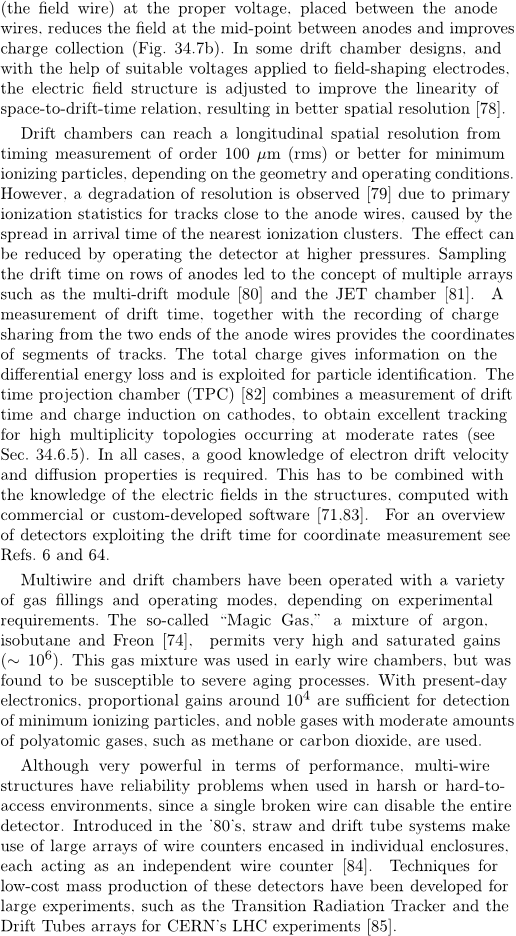Q2. What is the way to get the values of a set of parameters?
In some cases, such as branching ratios or masses and mass differences, a constrained fit may be needed to obtain the best values of a set of parameters.
Q3. How many students from 500+ US high schools learn fundamental physics?
About 100,000 students from 500+ US high schools learn fundamental physics as they participate in inquiry-oriented investigations and analyze real data online.
Q4. How do the authors find the values of the fractions Pi?
Pi by minimizing the χ2 as a function of the m− 1 independent parameters:χ2 = Nr ∑r=1Nk ∑k=1(Rrk − RrδRrk)2, (3)where the Rrk are the measured values and Rr are the fitted values of the branching ratios.
Q5. What are the main areas of responsibility of the authors of the Particle Listings?
The Particle Listings also give information on unconfirmed particles and on particle searches, as well as reviews on subjects of particular interest or controversy.
Q6. How many full-text DOE sponsored STI reports are there?
SciTech Connect also has over 400,000 full-text DOE sponsored STI reports; most of these are post-1991, but over 140,000 of the reports were published prior to 1990.
Q7. What is the way to determine the ideogram's area?
since for this choice of area the height of the Gaussian for each measurement is proportional to (1/δ xi)2, the peak position of the ideogram will often favor the high-precision measurements at least as much as does the least-squares average.
Q8. What is the database of past, present and future conferences?
The database of more than 20,600 past, present and future conferences, schools, and meetings of interest to high-energy physics and related fields is searchable by title, acronym, series, date, location.
Q9. How many links do the ADS have?
The ADS’s search engine also indexes the full-text for approximately four million publications in this collection and tracks citations, which now amount to over 80 million links.
Q10. What is the common case of correlated errors?
Another common case of correlated errors occurs when experimenters measure two quantities and then quote the two and their difference, e.g., m1, m2, and ∆ = m2 − m1.
Q11. What is the free software suite for lattice QCD?
This freely available software suite provides a set of tools to be used in lattice QCD simulations, mainly a HMC implementation for Wilson and Wilson twisted mass fermions and inverter for different versions of the Dirac operator.
Q12. How many people are associated with particle physics?
People• INSPIRE HEPNames: Searchable worldwide database of over 112,000 people associated with particle physics and related fields.
Q13. What is the name of the LIGO Science Education Center?
LIGO Science Education Center: The LIGO (Laser Interferometer Gravitational-wave Observatory) Science Education Center has over 40 interactive, hands-on exhibits that relate to the science of LIGO.
Q14. What is the procedure used to increase the errors?
To average data, the authors use a standard weighted least-squares procedure and in some cases, discussed below, increase the errors with a “scale factor.”

![Table 38.1 gives a number of common probability density functions and corresponding characteristic functions, means, and variances. Further information may be found in Refs. [1– 8], [10], and [11], which has particularly detailed tables. Monte Carlo techniques for generating each of them may be found in our Sec. 40.4 and in Ref. [10]. We comment below on all except the trivial uniform distribution.](/figures/table-38-1-gives-a-number-of-common-probability-density-2ojzft10.png)
![Figure 34.8: Charge rate dependence of normalized gas gain G/G0 (relative to zero counting rate) in proportional thin-wire detectors [86]. Q is the total charge in single avalanche; N is the particle rate per wire length.](/figures/figure-34-8-charge-rate-dependence-of-normalized-gas-gain-g-1kzepp9m.png)


![Fig. 21.1 illustrates all the tests of strong-field and radiative gravity derived from the above-mentioned binary pulsars: (3 − 2 =) one test from PSR1913+16, (5 − 2 =) 3 tests from PSR1534+12, (4 − 2 =) 2 tests from PSR J1141−6545, and (7 − 2 =) 5 tests from PSR J0737−3039. [See, also, [64] for additional, less accurate, and partially discrepant, tests of relativistic gravity.]](/figures/fig-21-1-illustrates-all-the-tests-of-strong-field-and-1aoceoqc.png)